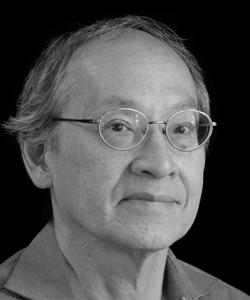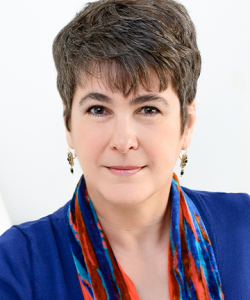Ten Questions for Arthur Sze

“Write one poem at a time and resist knowing where you are going.” —Arthur Sze, author of Into the Hush
Jump to navigation Skip to content

“Write one poem at a time and resist knowing where you are going.” —Arthur Sze, author of Into the Hush
In this Books Are Magic event, Tiana Clark reads from her second poetry collection, Scorched Earth (Washington Square Press, 2025), and discusses the cinematic quality of poems and whether poetry should always tell the truth in a conversation with Terrance Hayes.
In a 2023 BOMB Magazine interview by Wendy Xu, she asks Emily Lee Luan about the cinematic, image-specific aesthetic of the poems in her collection 回 / Return (Nightboat Books, 2023). “I think my poems try to understand internal emotional change through the external world—that might be why image and scene are so central,” says Luan. “If you look at something for long enough, then you might be able to understand what’s happening within you.” Take inspiration from this juxtaposition between interiority and externality, and the notion of finding understanding and connection through prolonged observation, and write a poem that uses extensive imagery to reflect the speaker’s internal emotional state. In lieu of expository description, how does imagistic expression lend a different kind of dynamism to your work?

“I was playing, trying to make something I liked, something no one else had already made for me.” —Rachel Trousdale, author of Five-Paragraph Essay on the Body-Mind Problem
Over the course of Rita Dove’s three-stanza prose poem “Prose in a Small Space,” the speaker meanders through a sequence of questions, observations, and digressions, periodically returning to the functionality of the prose poem form itself. “Prose likes to hear itself talk; prose is development and denouement, anticipation hovering near the canapés, lust rampant in the antipasta,” writes Dove. This week, forgo the options of line breaks and nonstandard grammar of more conventional poetry, and compose a series of short prose poems that take greater advantage of other poetry elements—rhythm, prosody, diction, pacing, and sensory details. Allow your prose to “hear itself talk,” develop, and conclude.
Can a poem calm the nerves? Whether it’s reading, listening to music, meditating, taking a walk, or observing the natural environment, consider the activities and sensory experiences that bring you some peace of mind. Compose a poem with diction, rhythm, imagery, and sentiments that evoke a state of tranquility. You might prepare by initially jotting down a list of words, phrases, and tidbits of sensory details, including specific sounds and types of words that align with your serene tone. Be open and allow yourself to be honest—and even playful—about what calms you down.
In this 2024 Writers on Writing event hosted by the Newberry Library and StoryStudio Chicago, Hanif Abdurraqib and Eve L. Ewing discuss their literary careers, the craft of writing, and how they tackle the complexities of art and activism.

“This isn’t writer-stuff, it’s life-stuff that bears on the poems.” —Lesley Wheeler, author of Mycocosmic
Australian author Gerald Murnane talks about being drawn to the “bewildering and at the same time satisfying feeling” of getting lost in familiar places in an interview in the Winter 2024 issue of the Paris Review. “I can very readily get myself lost in strange country towns or on back roads,” Murnane says, “knowing all the time where I am, that there’s no threat to my safety, that I can navigate myself home eventually.” Write a poem that explores the state of being lost, whether from a memory of a childhood incident, visiting a town, walking a new route, or perhaps from simply feeling lost in a chaotic or difficult situation. Amidst the bewilderment, are you able to find something you enjoy about being lost?
In this 2017 Asian American Writers’ Workshop event, Esther Lin reads her poem “I See Her Best,” which appears in her debut collection, Cold Thief Place (Alice James Books, 2025). Lin’s book is featured in Page One in the March/April issue of Poets & Writers Magazine.